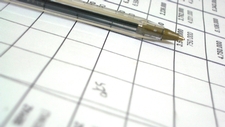Making and Recording Observations

TEKS Objective
The student is expected to collect and record data by observing and measuring, using the metric system, and using descriptive words and numerals such as labeled drawings, writing, and concept maps.
Essential Understanding
The student uses scientific inquiry methods during laboratory and outdoor investigations.
Science Background
Research Methods, Description: Visionlearning (website) - Engaging explanation of how scientists use detailed descriptions of their observations to identify patterns in natural systems and events.
Research Methods, Description
Visionlearning (website), www.visionlearning.com
Signature Lesson
Inquiring Minds: National Institutes of Health (website) - Students use careful observation to collect and share information, and propose and defend explanations about what is on the bottom of a “mystery cube.”
Inquiring Minds
National Institutes of Health (website), www.science.education.nih.gov
- Supporting Lessons
- Extensions
- Assessment Ideas
- Literature Connections
- Related
TEKS - Additional Resources
Supporting Lessons
Observing Not Just Watching: Pennsylvania Department of Education (website) - Students learn to distinguish between “seeing” and “observing,” and develop their observations skills by working with puzzle pieces.
Observing Not Just Watching
Pennsylvania Department of Education, www.pdesas.org
Elaboration Lessons and Extensions
Ooey Gooey: National Institute of Drug Abuse (PDF) - Students experience and learn about key parts of the scientific process by making and recording observations, asking questions and drawing conclusions regarding the contents of a mystery “goo” made from cornstarch and water.
Ooey Gooey
National Institute of Drug Abuse, m.drugabuse.gov
Assessment Ideas
Assessment: Science Notebooks in K12 Classrooms (website) - Use the rubrics provided to assess the quality of students’ scientific drawings, daily observations and use of science notebooks.
Assessment
Science Notebooks in K12 Classrooms (website), www.sciencenotebooks.org
Literature Connections
So Do You Have a Science Fair Project? Henderson, J. (ISBN-13: 978-0471202561)
What’s the Plan? Designing Your Experiment. Hyde, Natalie (ISBN-13: 978-0778751540)
Solving Science Questions: A Book About the Scientific Process. Chappell, R.M. (ISBN-13: 978-1600445422)
Additional Resources
Naturalist Journals: BioEd Online (website) - Free, downloadable teacher guide covering the uses and benefits of naturalist journals, which help scientists to organize sketches, pictures and written observations.
Naturalist Journals
BioEd Online (website), www.bioedonline.org
TEKS Navigation
Grade 4
Need Assistance?
If you need help or have a question please use the links below to help resolve your problem.

Comments